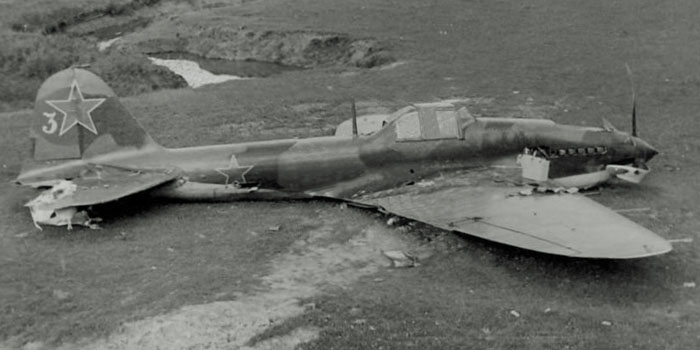
Single-seater Il-2s were vulnerable to attacks of fighters from behind; the enemy fighters could come close to 15 m to aim accurately against the well armoured but otherwise passive prey.
Capt.Ye.Koval of 243rd ShAP, wrote directly to Stalin to ask to modify the Il-2 adding a rear gunner position.
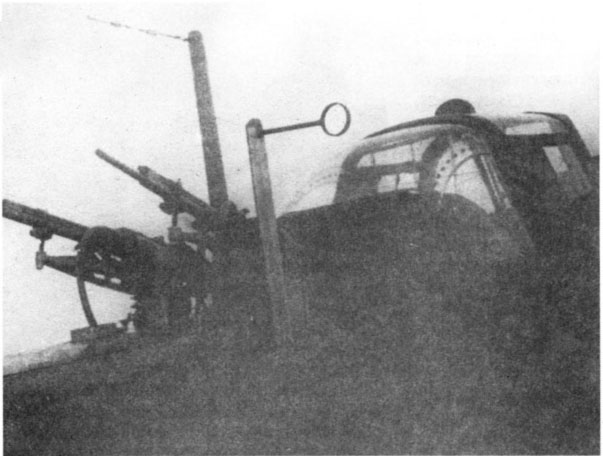
As a first attempt to remedy, the Ilyushin OKB developed two types of fixed installation to protect the rear.
One included two externally mounted ShKAS 7.62 mm guns, a mirror atop the windshield, a probe with a ring for aiming; the rear panel of the canopy became transparent, and the rear armour was cutten (unclear if replaced by an armor glass).
Image from: Ilyushin Il-2 and Il-10 Shturmovik of Gordon and Komissarov, ed. Crowood
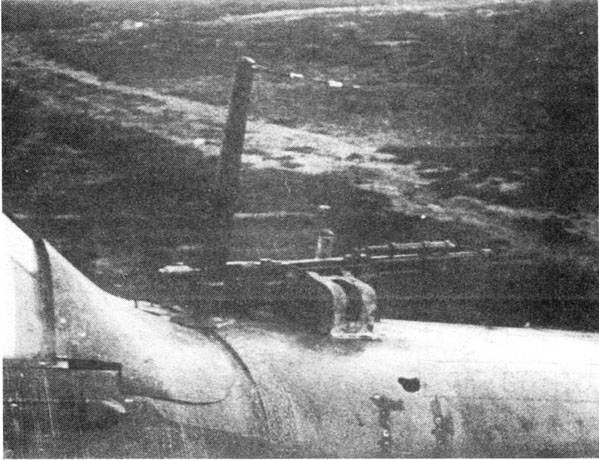
Another variant considered one UB 12.7 mm machine gun.
In both cases, small changes of the direction of the weapons were possible.
Both versions were tested in the middle of August 1941, but they gave a low degree of protection and were not put into production.
Image from: Ilyushin Il-2 and Il-10 Shturmovik of Gordon and Komissarov, ed. Crowood
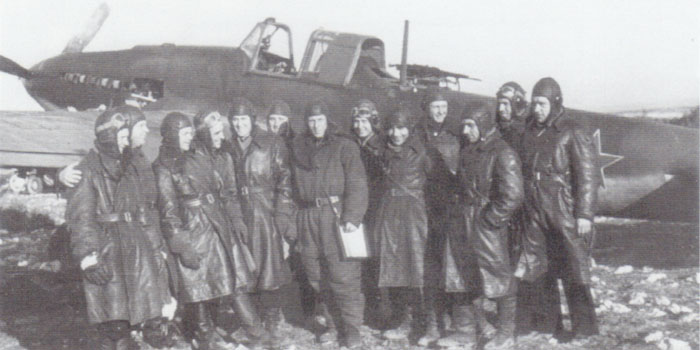
An operative Il-2 with the single fixed ShKAS installation. These installations were rare, giving very few protection to the planes. One can recognize the aiming mirror atop the windshield; note the internal gunsight, not mounted on all the single-seaters due to the danger created to the pilot's head during crash-landings.
The white-bordered star suggests a plane built in factory n.18 and metal wings.
Image from: Ilyushin Il-2 and Il-10 Shturmovik of Gordon and Komissarov, ed. Crowood

Plane White 6 of 18 ShAP of the Navy (Caucasian front, spring 1942) had a rear mirror on the windshield that identifies it as armed with a single fixed backwards firing ShKAS, as planes of photos above and below. There is also the same handgrip-shaped device over the engine cowling.
The white outlined stars, typical of Zavod 18, are clearly visible even on the wing undersurface.
Image via Vitaliy Timoshenko.
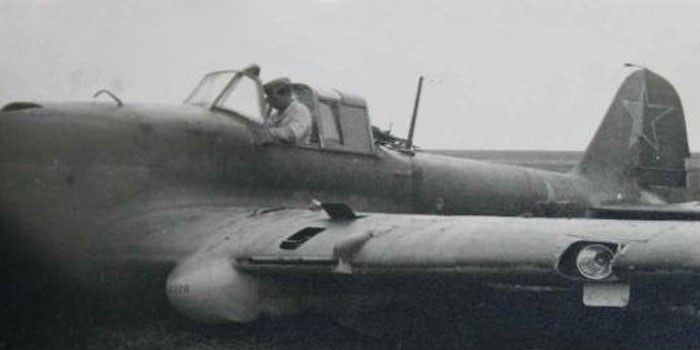
A photo of a similar downed Il-2 of 18th ShAP with rear fixed mg. Caucasian front, spring 1942.
The photos allow to recognize some details:
- the fixed ShKAS on the rear (with the circular sight over it) moved on the right side and fires obliquely on the right;
- the gun was remotely operated through a rectangular window opened behind the canopy;
- the antenna mast is moved on the left side and slightly oblique on the same side; its base is angular and protrudes over the skinning; the insulator of the wire is located just behind the mast;
- the aiming mirror can be seen atop the windshield on the left side;
- the bordered stars and the metallic wings with VYa-23 mm guns suggest that the plane was built in z.18;
- although the camo is not recognizable, it should be a black-green one with a typical pattern of this factory;
- a red 1 looks barely visible on the stabilizer, just in front of the star;
- the factory number on the nacelle: 186228
- a strange (aiming?) device can be seen on the nose; although rare, this can be found on photos of other Il-2s, included the one above.
Reconstruction of the look of red 1.
Click on the profile to see a larger 3 views drawing.
An higher resolution of this artwork will be published on the book on Il-2 by Jason Moore.
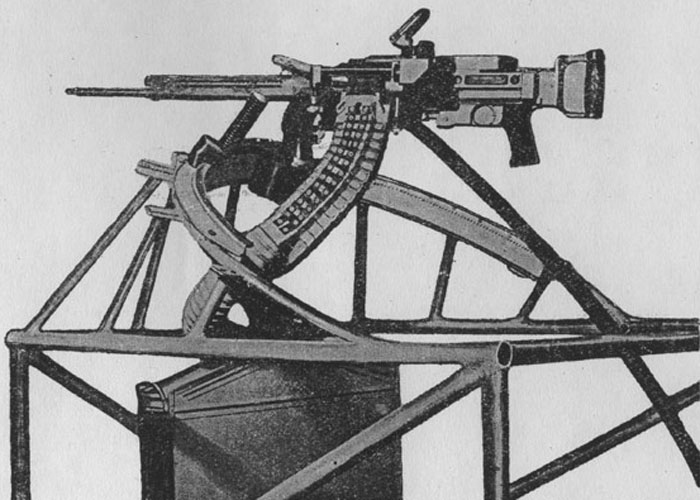
From the spring of 1942, some frontline units started converting the single-seater Il-2s into two seater by adding a crude vane for a gunner, that usually sat on a tissue belt.
The gun and installations were sometimes taken from other planes, as R-5 and Pe-2s, and changed from unit to unit; the weapons were ShKAS, UBT or DA, whatever was available.
Anyway, the most of the Il-2s (about 900, on a total of 1200) were converted by a kit with the same TSS-1 (or very similar) installation utilized on Yak-4s, Ar-2s and early Pe-2s.
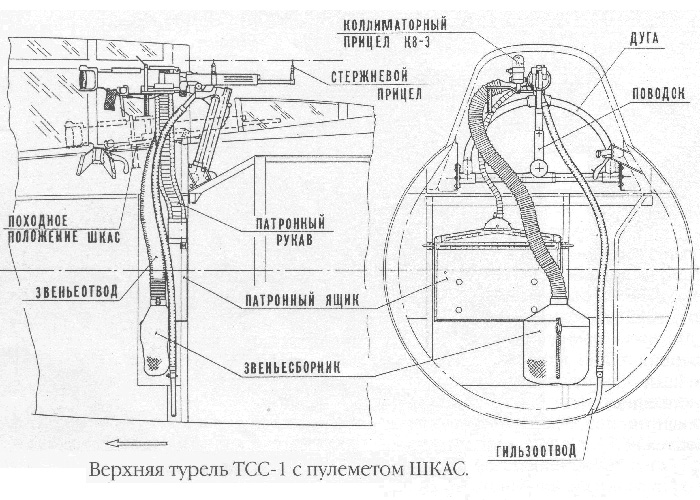
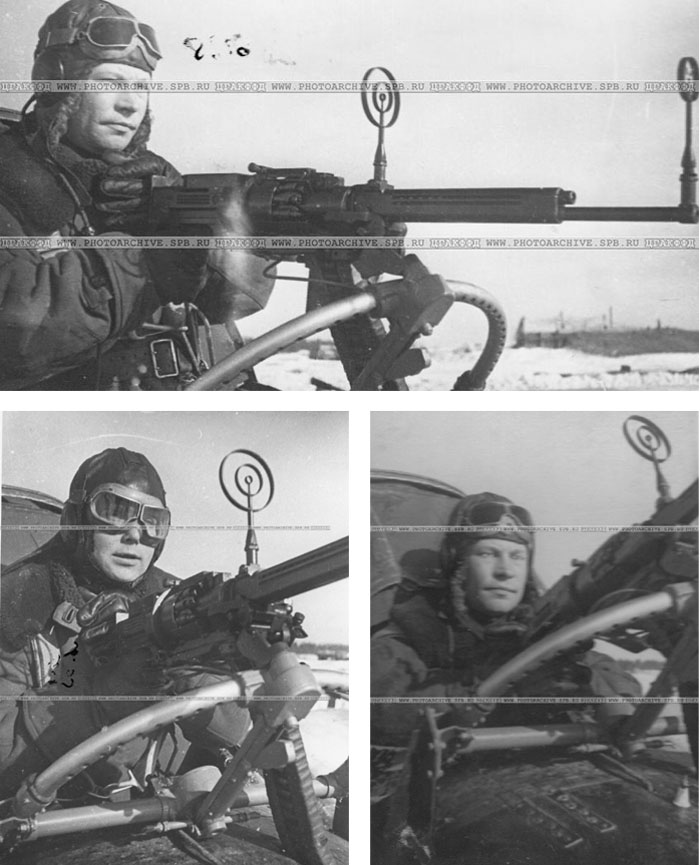
Images: fotoarchive.spb.ur
Here are three photos of the most typical TSS-1 installation, including an half-ring rail (apparently standardized) joined with bolts to externally mounted supports (changing in exact shape from plane to plane). The shells flexible guide passed through a slot opened in the rear fuselage. No any tube or bag to recover waste shells is visible.
This installation required to delete the radio mast. Sometimes the radio wire aerial were connected to the supports of the gun, as on the photo below, but they appear to be simply absent in the most part of the images.
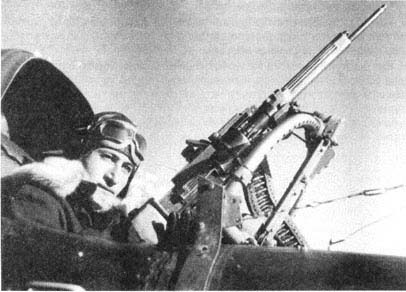
Image from: Ilyushin Il-2 and Il-10 Shturmovik of Gordon and Komissarov, ed. Crowood
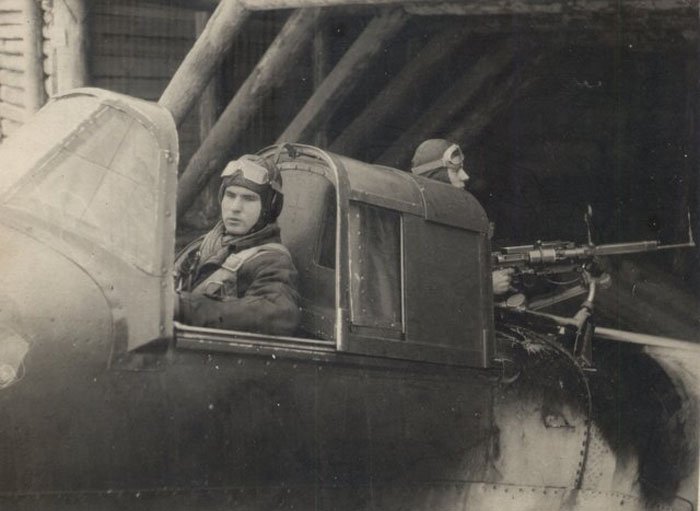
Above: Another plane with a similar ShKAS installation. The supports seem a bit different, but the ring is the usual one.
This plane shows strengthening bands on the rear fuselage and traces of oversprayed winter paint.
Below: a recent image of a wreck of Il-2 shows the distorted mg support of the same type.
On the background, we see a part of the landing gear.
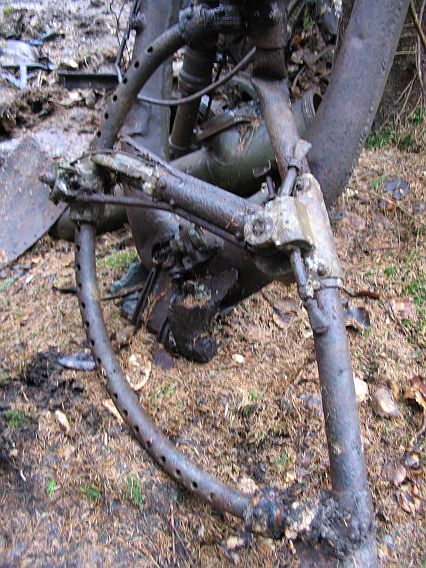

Planes of 7th GvShAP VVS KBF (Baltic Fleet), probably in the summer of 1943.
White 14 was a single seater converted by adding a gunner's position, apparently similar to those seen above.
The image shows clearly the strengtheners of the rear wood fuselage, the external VV-1 gunsight; perhaps there is an air filter on the wing root. It's unclear if the wing is metallic, and so for the pattern of the black-green camouflage.
Below: a drawing of this plane made for the book on Il-2 of Jason Moore.
Reconstruction of the look of red 3.
Click on the profile to see a larger 3 views drawing.
An higher resolution of this artwork will be published on the book on Il-2 by Jason Moore.

Left: Screenshots from a movie showing a converted Il-2 white 99 returned from a mission with a damage due to aa fire.
The camo pattern is unrecognizable due to the shadows of a camouflage net. The obliquely painted guards emblem, the slightly oblique white 99 and the apparent lack of the red star on the fuselage sides are noteworthy. The position of the Guards emblem is similar to that of another plane known to be of 15 GvShAP.
The lack of a white outline on the star on the tail (an usual factory emblem of Z.18) suggests a plane built in Z.1 or Z.30, with wooden wings. Differently from white 14, this plane has not strengthening stripes on the rear fuselage.
The plane has the external VV-1 aiming device.
Below: an artist's impression of this plane made for the book on Il-2 of Jason Moore.
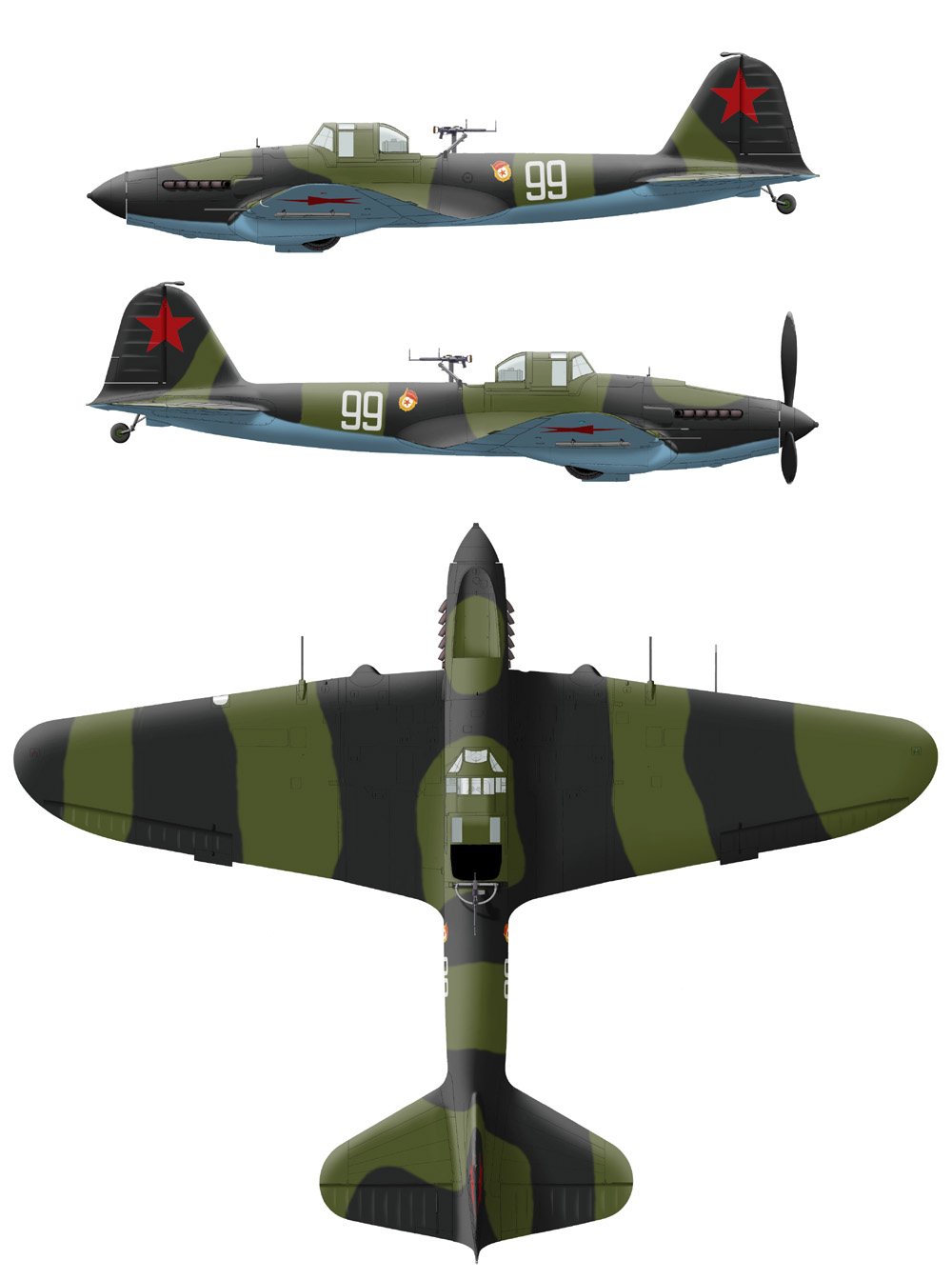
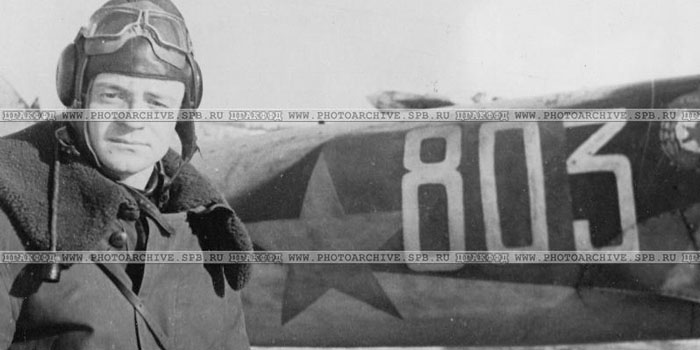
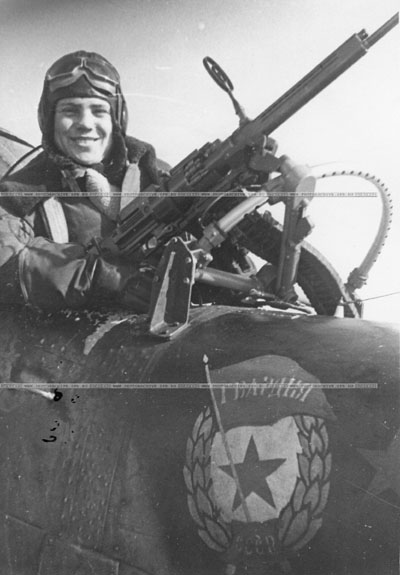
Captain Aleksandr Klimentevich Eremin of 15 GvShAP became squadron commander in January 1943. He had shot down a German plane in 1942. He was killed on February 12, 1944. http://www.warheroes.ru/hero/hero.asp?Hero_id=16536
Besides this photo, a drawing based on descriptions of veterans is available as a source.
The photo shows an oblique Guards emblem, as on many other planes of this unit, and a partial winter painting.
The gunner of the same plane, A.I. Bekatov.
Silver 803 was built in Z.30 as a singleseater, and then modified with the addition of a rear gunner's position and a ShKAS.
Note the victory star just behind the Guards mark.
According to the Russian reconstruction, this plane had a dark blue spinner as a squadron color; other squadrons of this regiment had red or silver spinners.
Images from Photoarchive.spb.ru via A. Ruchkovsky and Vitaliy Timoshenko.

A reconstruction of Silver 803.
Click on the profile to see a 3 views drawing.
An higher resolution version of this artwork will be published on the book on Il-2 of Jason Moore.
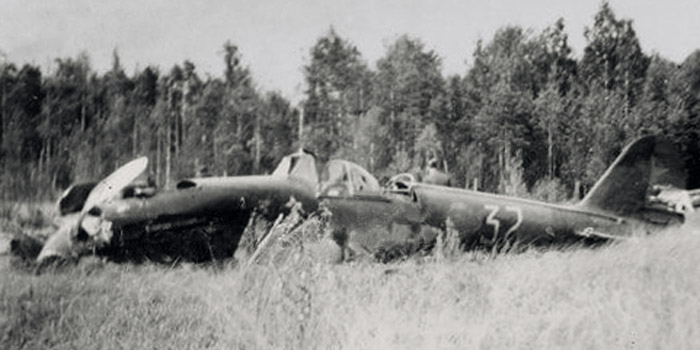
A wrecked Il-2 with rear gun position, white 37.
It seems to have a partially obliterated guards mark in front of the number, the same position of white 99, so it could belong to 15th GvShAP .
The plane shows fasteners on the rear fuselage and evidence of repaintings both with black and with a lighter color.
Thanks to A. Ruchkovsky
Reconstruction of white 37.
Click on the profile to see a larger 3 views drawing.
Am higher resolution version will be published on the book on Il-2 of Jason Moore.
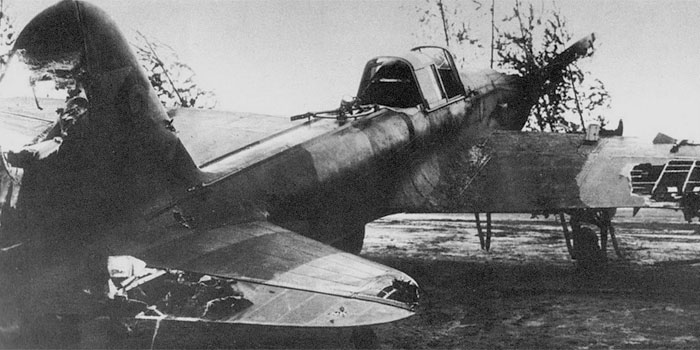
Red 3 was a single-seater converted into two-seater by cutting an opening on the fuselage. The details of the gun installation are not clear, but it doesn't seem to be the standard one.
The wing looks of the wooden type, and reinforcing ribs are visible on the rear fuselage. Plain red stars are more or less visible on the tail and on the fuselage; a red bort number 3 is visible on the stabilizer.
The camo scheme could be that of factory n.30, the variant without the black 'balls' on the sides of the rear fuselage.
Reconstruction of the look of red 3.
Click on the profile to see a larger 3 views drawing.
An higher resolution of this artwork will be published on the book on Il-2 by Jason Moore.
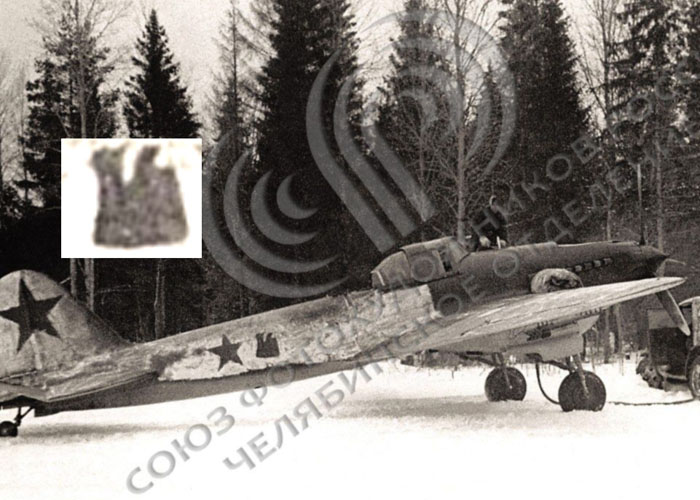
Photo of Il-2 with wooden wings, probably from Z.1, The photo was taken on the North-Western Front during the winter 1942/43. Probably the plane belongs to 174th ShAP.
The part of the rear gun is unclear; probably the ShKAS and its support are removed, but the opening for the gunner, the ammo slot and the attachment points are those of the typical conversion.
The pattern of the winter finish is unusual: a sharp line divides the rear fuselage from the front part that preserved the summer camo. The wings looks only marginally covered by a thin white ayer, with solid blotches.
An oblique red 14 is recognizable on the fuselage through an irregular window in the white finish.
The plane seems to show aiming lines, and probably the VV-1 device; it's likely equipped with intake air filter, because it's unlikely that the bag on the wing root can remain there without its support.
Thanks to A. Ruchkovsky.
Reconstruction of the look of red 14.
Click on the profile to see a larger 3 views drawing.
An higher resolution of this artwork will be published on the book on Il-2 by Jason Moore.

Il-2 of Major Petr Pavlovich Kozlov of 673 ShAP. This pilot and his plane were lost on March 7, 1943, on the Kalinin front. This pilot is named on the inscription of the new plane of his wingman Rogozhin, that was shot down in the same day but survived and returned quickly to fight.
The plane is shown in a photo that I can't reproduce for copyright reasons. Probably it was taken few days before his death. The image shows few more than the pilot posing close to the slogan, the numbers and the canopy. The slogan is very fresh, probably in white, while the numbers are darker and only their upper part is visible, the lower one being probably hidden by stain; a further fainter shape of the number is visible few aft; probably the original number was deleted with a lighter green paint (or green over black) to make room for a star, that is vaguely visible under the slogan. The plane shows confused traces of winter paint: it seems that it received a very faint layer or mottling, that was worn and then retouched both with sprayed blotches and with brush strokes, many of which are aligned behind the wing root. The stain was cleaned in the upper part where the slogan was painted in a second time, leaving to see the upper part of the number only. The number itself appear relatively dark, and was supposed blue because it's known that the inscriptions on the plane of Rogozhin were blue.
The plane is known to be of Zavod 30, and I've drawn it with their usual pattern. It's unclear why the star is lacking from its usual position between the wing and the tail and was repainted so forward, but the same thing was for the plane of Rogozhin too.
Thanks to Vitaliy Timoshenko for the image and the informations.


Two poor photos showing a plane wit h add-on gun position. It seems a larger weapon than ShKAS, probably an UB. The detail of the support is not recognizable. The camo pattern and the apparent presence of balance weights suggest a plane built in z.18 with metallic wings, while the camo of the single-seater fellow looks of Z.1.
(From Viktor Publishing, Il-2 part 1).

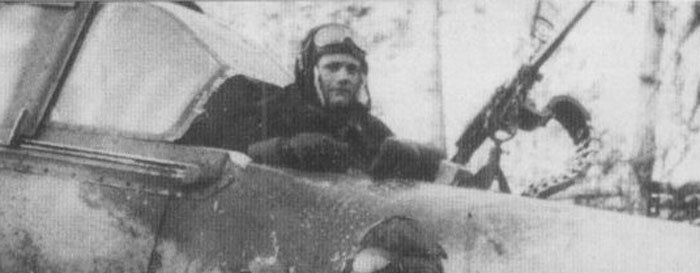
This conversion of this plane appears rougher than the standard half-ring: it seems that the support of the ShKAS is fixed on the fuselage skin, giving only a limited field of fire. The ammo box seem visible behind the support. It could be from an U-2.
The partial winter finish is made with MK-7 washable paint.
(From Ilyushin Il-2 by Oleg Rastrenin)
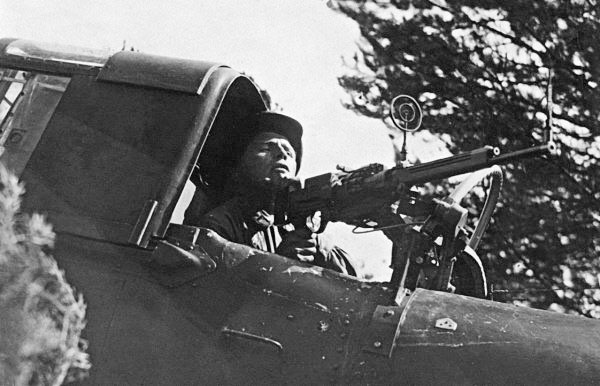
Above: a variation of the usual installation of the ShKAS on a plane of the 243th ShAD in August 1942.
Right: an UBT installed on a different support on another plane of the 243th ShAD in August 1942. The gun was of the type installed on Il-4s and Li-2s and, later, on Il-10s, with the gas recover manifold on the left of the barrel.
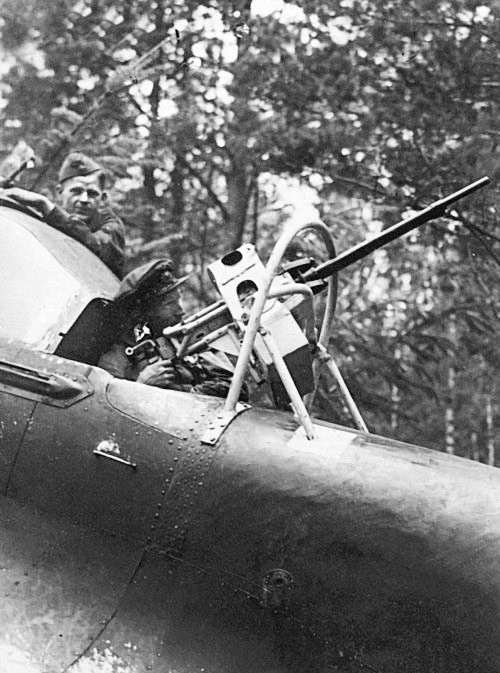
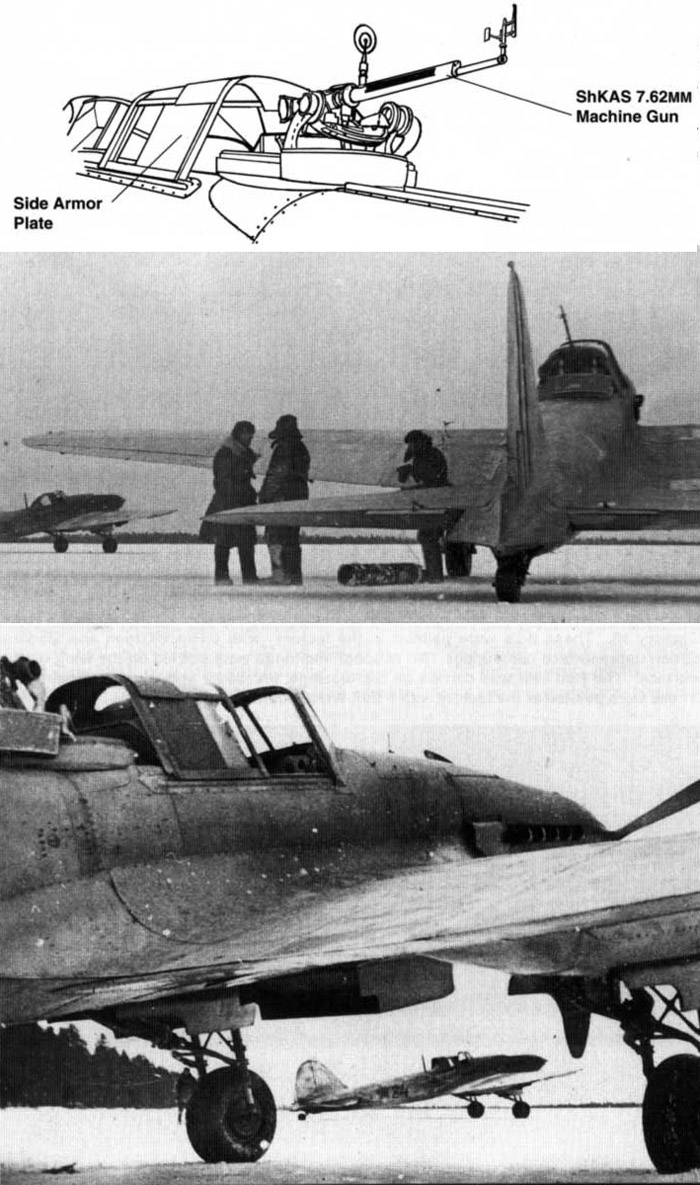
Photos of an Il-2 of 57th ShAP converted with the addition of a turret ring. It seems an adaptation from some turret armed with a ShKAS seen on some R-5s adapted for ground attack. The installation is larger than those seen above, and gives an angle of fire of about 270°. The curved object behind the ring should be an ammo box solidal with it.
As usual for these conversions, the installation is unprotected when the sliding hood of the pilot is closed.
(From Il-2 in action, Squadron/Signal).

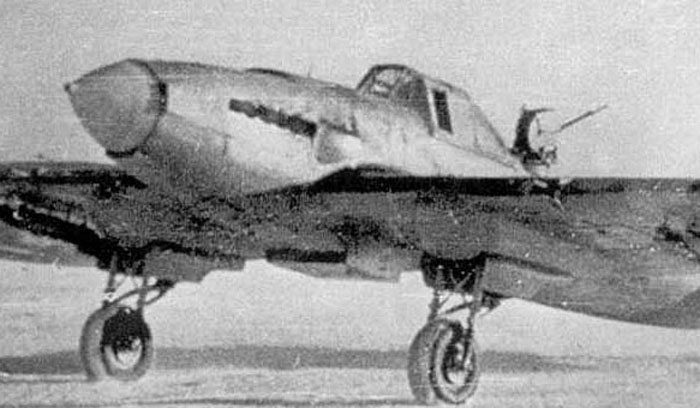
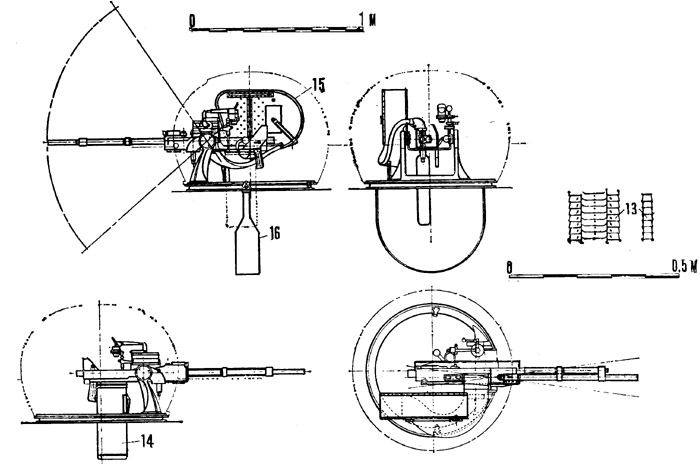
This winter-camouflaged Il-2 looks to have installed an UTK-1 turret with UBT gun; it is the same turret of Il-4s and Li-2s, but without the glazing. The protruding large object is the ammo case, on the right side of the gunner. The cut for the turret is all made behind the rear part of the canopy, apparently without cutting it.
The wings are of the type built for the 23 mm guns, but the small barrels suggest that it's armed with 20 mm ShVAK guns. Four rockets rails are recognizable under each wing.
The plane on the background looks to have the more traditional conversion with ShKAS machine gun.
Below left: a drawing of the inside of a UTK-1 turret on an Il-4. One can see:
15-the ammo box on the right side of the gunner's position
16- the belt where the gunner sits
14- the waste shells bag, under the gun
13- an enlarged detail of the flexible ammo duct.
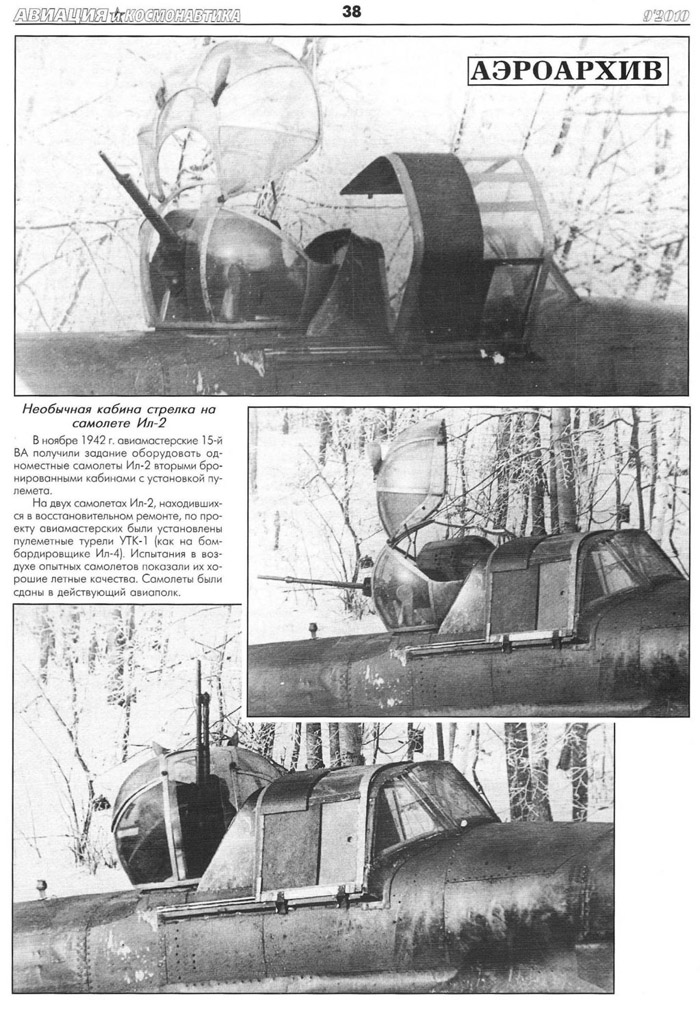
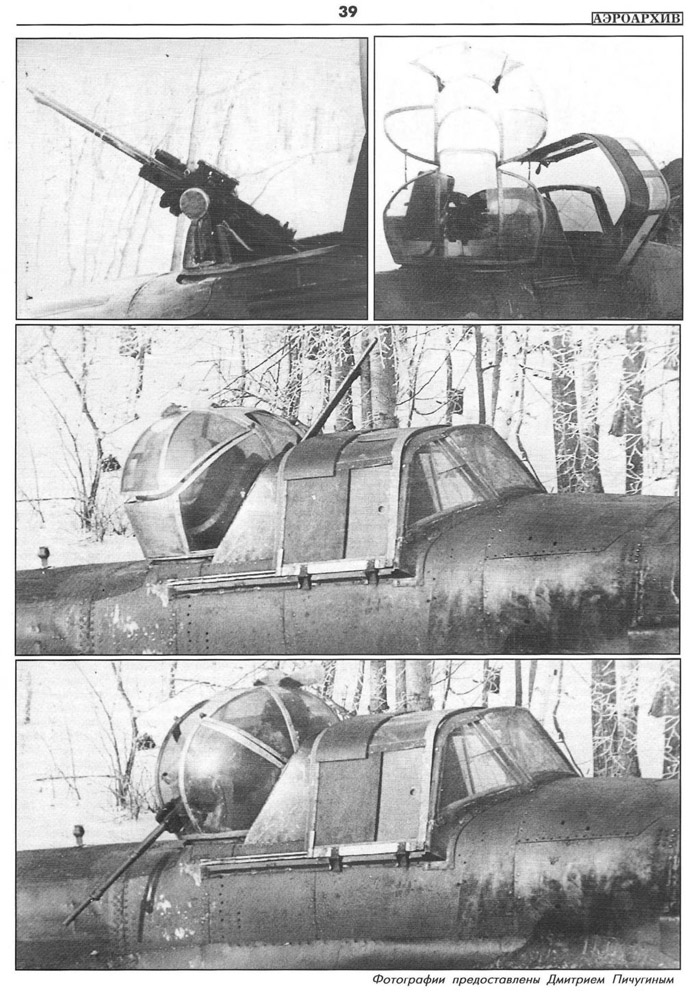
The installation of a UTK-1 turret was experienced again in May 1943, when the two-seater Il-2 with UB installation were already in production. It's interesting to compare this conversion with the field-made one visible in the photo above.
As one can see, it's the same type of turret of Il-4s and LI-2s; the UBT gun was different from the UB installed on traditional twoseaters Il-2s, because the gas recovery manifold was aside the barrel instead of over it. One can see the large ammo box with rounded corners on the right side of the gunner's position.
This turret was installed as close as possible to the pilot's canopy, that was modified to be hinged on its right side instead of sliding rearwards; apparently, this required the suppression of the fuel tank behind the pilot.
In the photo, the radio mast appears suppressed, or perhaps replaced by the small object protruding on the rear fuselage.
Despite the good field of fire, the installation was not chosen for production, probably due to the increasing in drag and to the necessity to relocate the fuel tank.
Scans from Aviacia i Kosmonautika
Below: a color profile of the plane made for the book on Il-2 of Jason Moore. Being the camouflage unknown, it was drawn on the base of the fact that the photos seem to show a metallic rear fuselage; so the plane was converted from an early production Il-2; the painting was made on the base of the typical look of these planes after the war outbreak.





